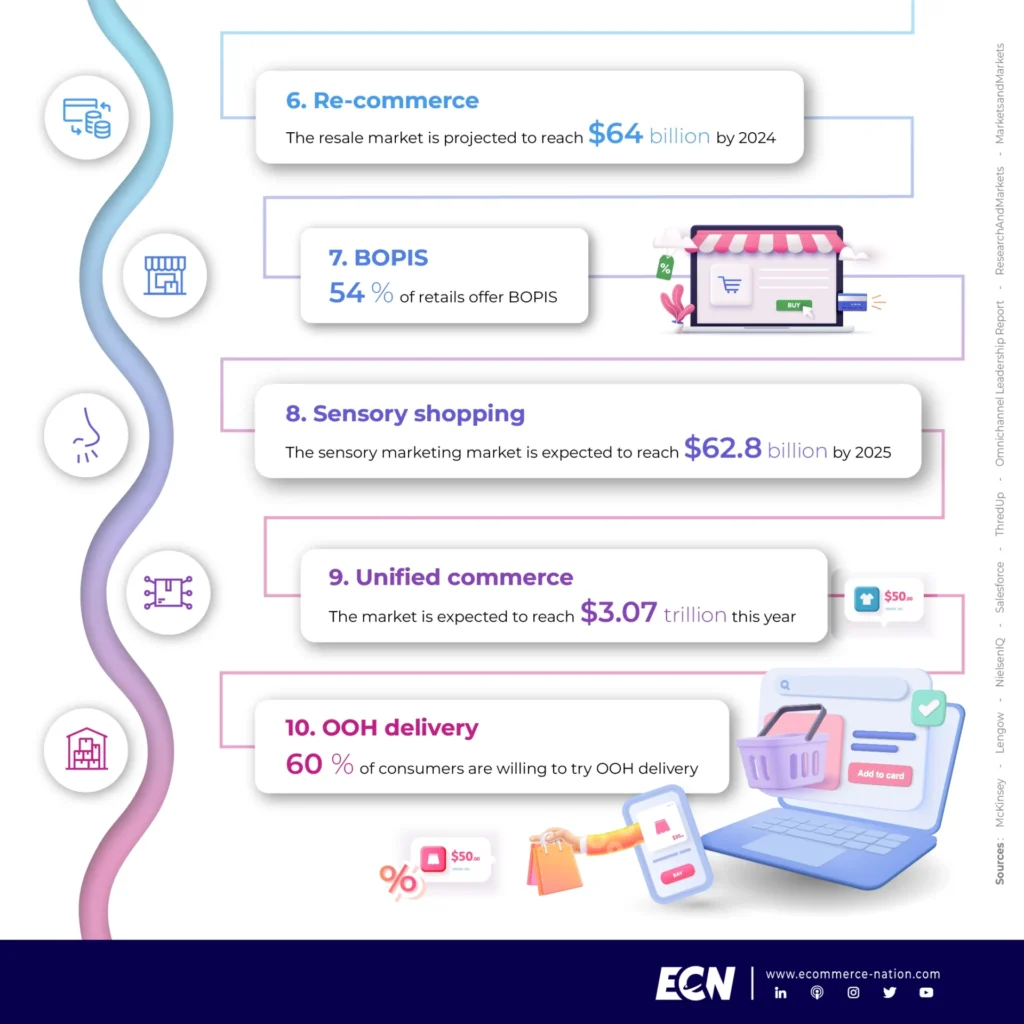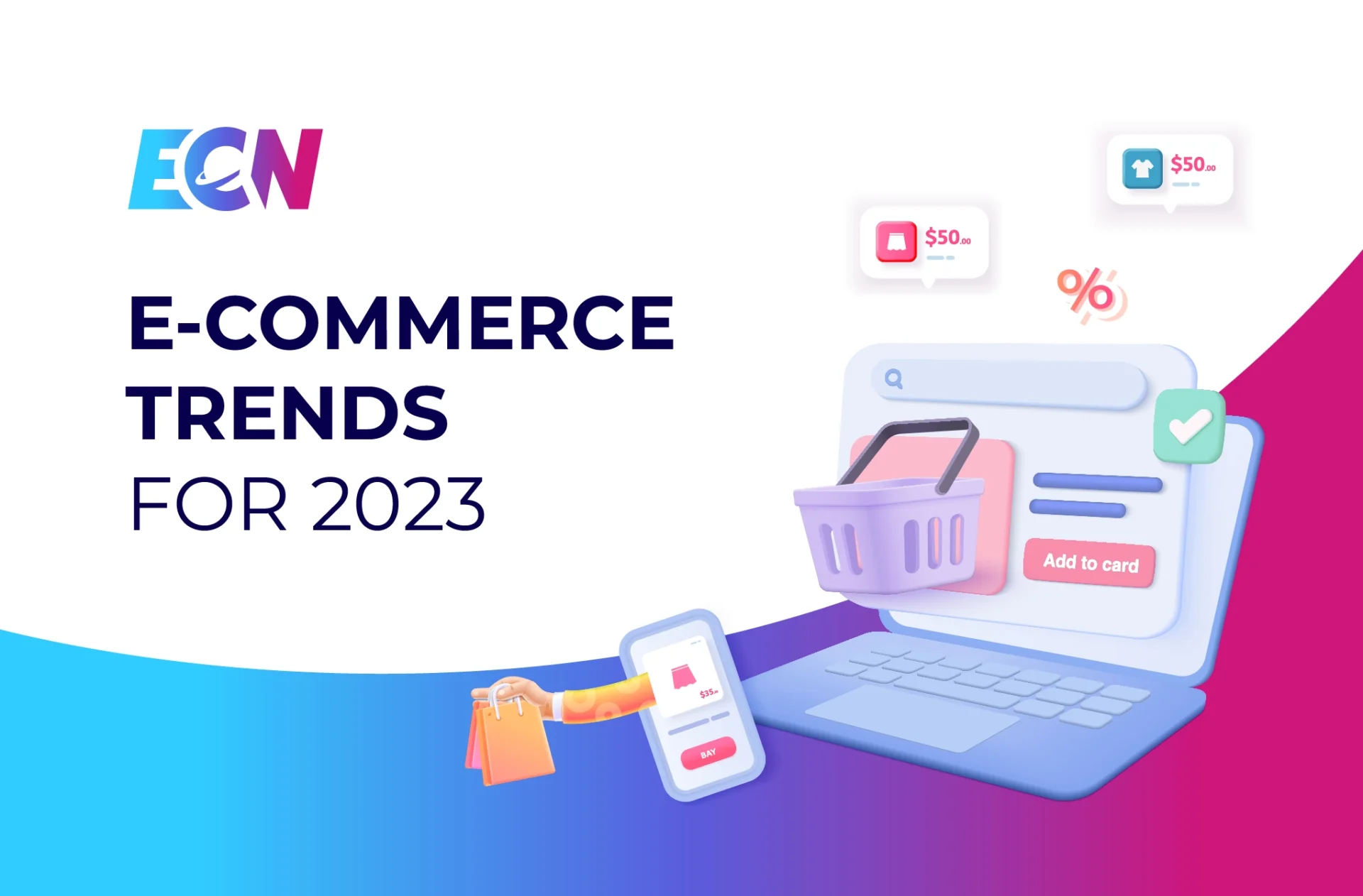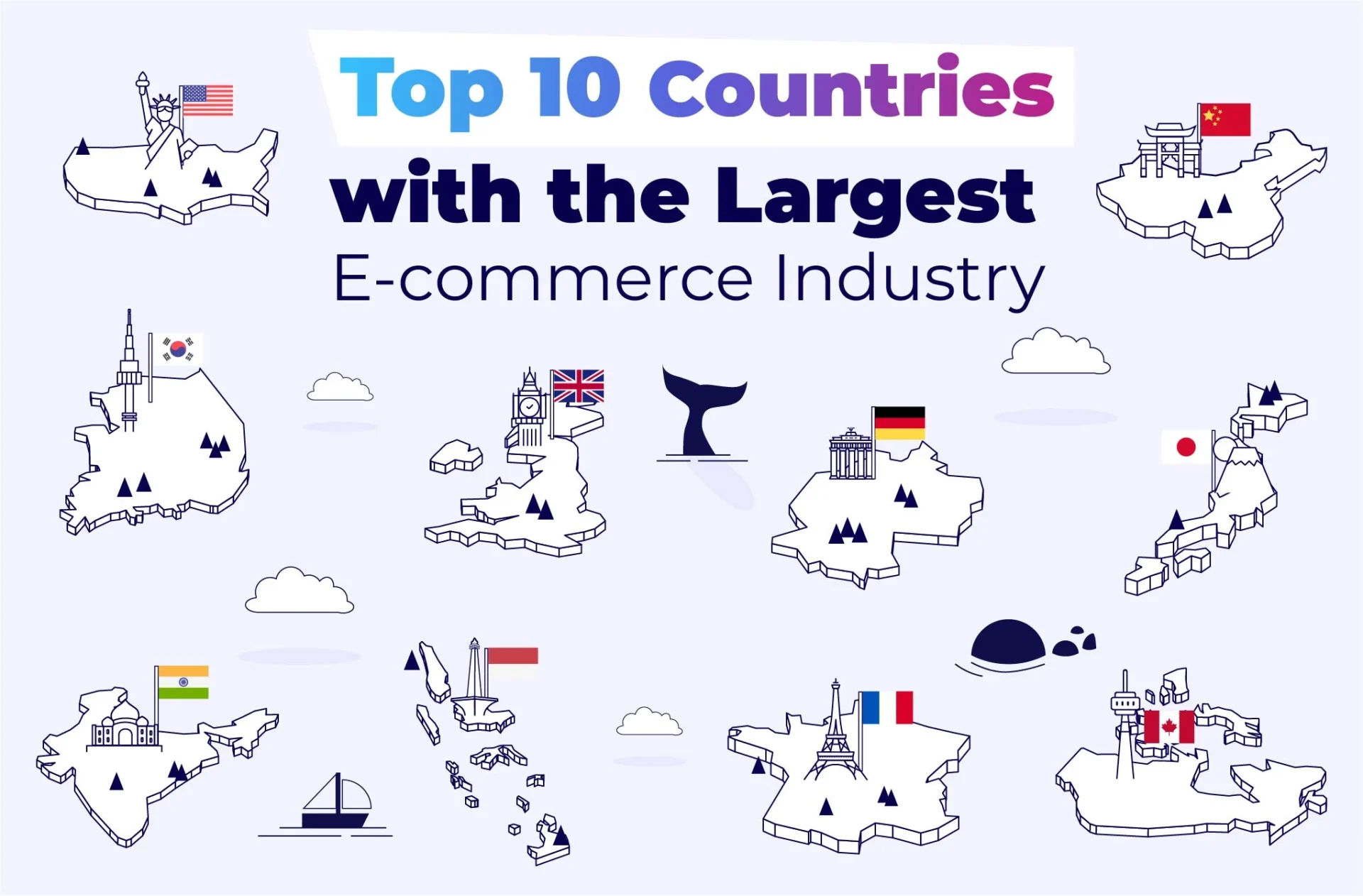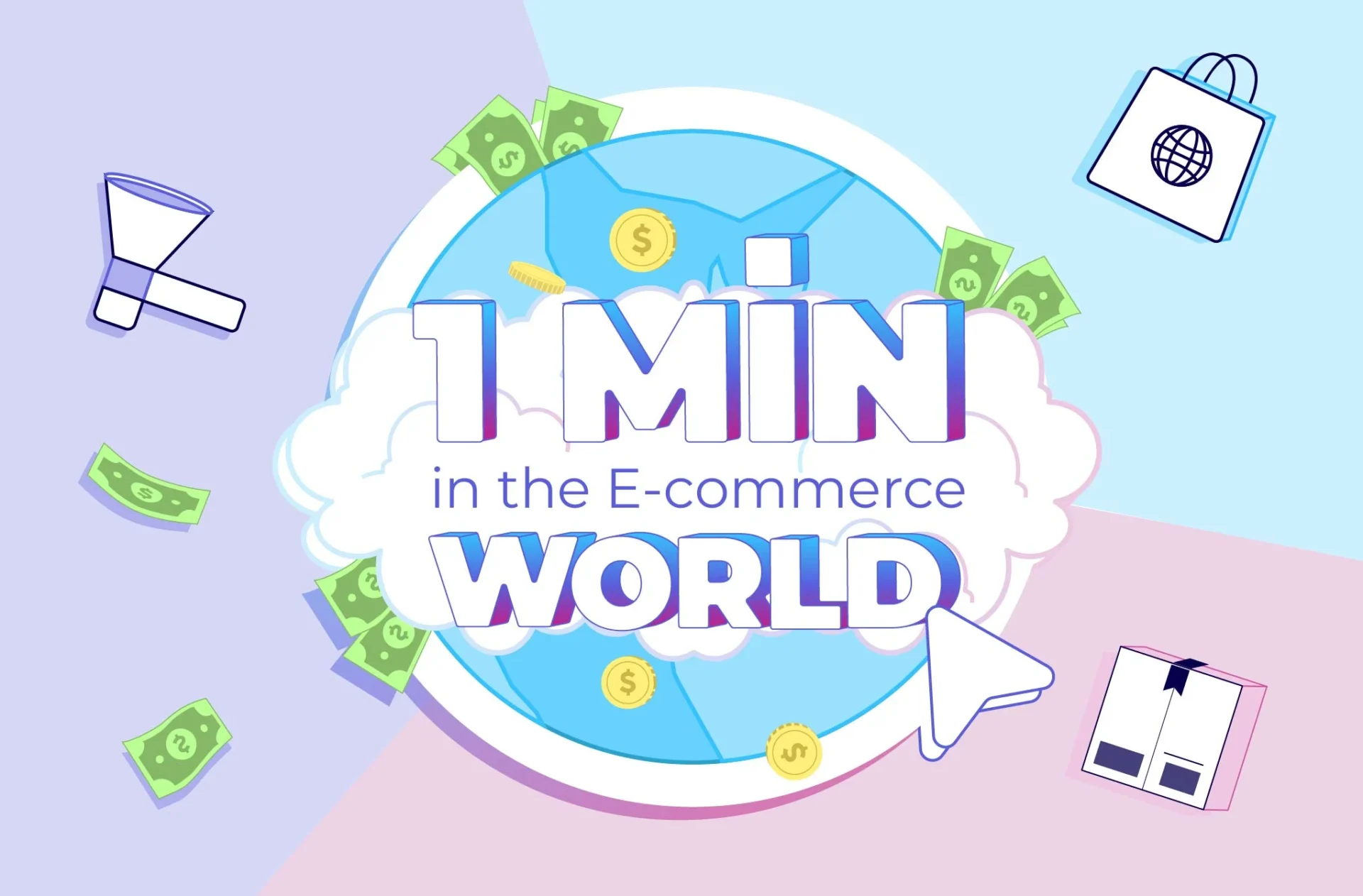The past few years have been transformative for the e-commerce industry, with the COVID-19 pandemic leading to a surge in online shopping. This has resulted in global e-commerce sales exceeding USD 5.211 trillion, according to Statista.
As we look towards the year 2023, it is important for online retailers to keep up with the latest e-commerce trends in order to stay competitive and attract new customers. In this article, we will identify the top e-commerce trends for 2023 and provide actionable insights to help you optimize your online store for maximum conversion rates and customer retention.
The COVID-19 pandemic has also accelerated the adoption of new technologies, such as AI and AR, which will play a crucial role in shaping the future of e-commerce. By embracing these technologies and incorporating them into their e-commerce strategy, retailers can offer a more personalized and immersive shopping experience, leading to increased customer loyalty and higher sales.
To help you navigate these trends, we have created an informative infographic summarizing the key takeaways. So, whether you’re just starting out in e-commerce or looking to take your online store to the next level, this article will provide you with the insights and inspiration you need to succeed.
Based on the given information here you can write your Ecommerce marketing plan according to the latest future trends. Read more about writing a marketing plan in the “Ecommerce Marketing Plan: How to Create a Marketing Plan” article.
#1 Personalization through AI
If an email is not personalized, 52% of consumers indicate that they would seek their desired products or services elsewhere.
With AI-powered personalization, retailers can deliver more relevant experiences to their customers. By 2025, it is estimated that the global market for AI in retail will reach $19.9 billion.
According to McKinsey, 71% of consumers expect a customized experience when they shop, and 76% of them feel frustrated when this is not the case. According to the study, companies that excel at customisation processes generate an average of 40% more revenue than their competitors.
#2 AR and VR
Augmented Reality (AR) and Virtual Reality (VR) technologies are becoming increasingly popular in the world of e-commerce, and for good reason. They offer an immersive and interactive experience for customers, allowing them to visualize products in a way that was previously impossible.
By leveraging these technologies, retailers can provide their customers with a more engaging shopping experience, resulting in increased brand loyalty and higher sales. It is predicted that the VR retail solutions market will grow to approximately $5.5 billion by 2028, whereas the AR retail market is projected to reach around $6.7 billion in size.
#3 Subscription models
The subscription-based business model has seen remarkable growth in recent years, with McKinsey reporting an annual growth rate of over 100% for the subscription e-commerce market over the past five years.
This surge in popularity can be attributed to the convenience and personalization that subscriptions offer to customers. Subscription-based businesses can provide a consistent revenue stream and foster long-term customer loyalty.
Customers also benefit from the convenience of having products delivered regularly without having to worry about reordering. As the e-commerce landscape continues to evolve, subscription-based businesses are likely to remain a popular option for both consumers and retailers alike.
#4 Understanding of customers’ beliefs
According to a recent study conducted by NielsenIQ, 78 percent of consumers in the United States consider a sustainable lifestyle to be significant. It is important for companies to understand their customers’ beliefs and values to create more meaningful connections with them.
By aligning with customers on social and environmental issues, companies can build trust, loyalty, and a sense of community with their audience. Moreover, it can enhance brand reputation and increase sales. Therefore, companies that prioritize sustainability and transparency in their operations and communication can benefit from a competitive advantage in the market.
#5 Conversational marketing
Conversational marketing is a growing trend in the e-commerce industry, leveraging technology such as chatbots, messaging apps, and voice assistants to interact with customers in a more personalized and engaging way. This approach allows for real-time, two-way communication between brands and customers, enabling businesses to address customer needs more effectively and build stronger relationships.
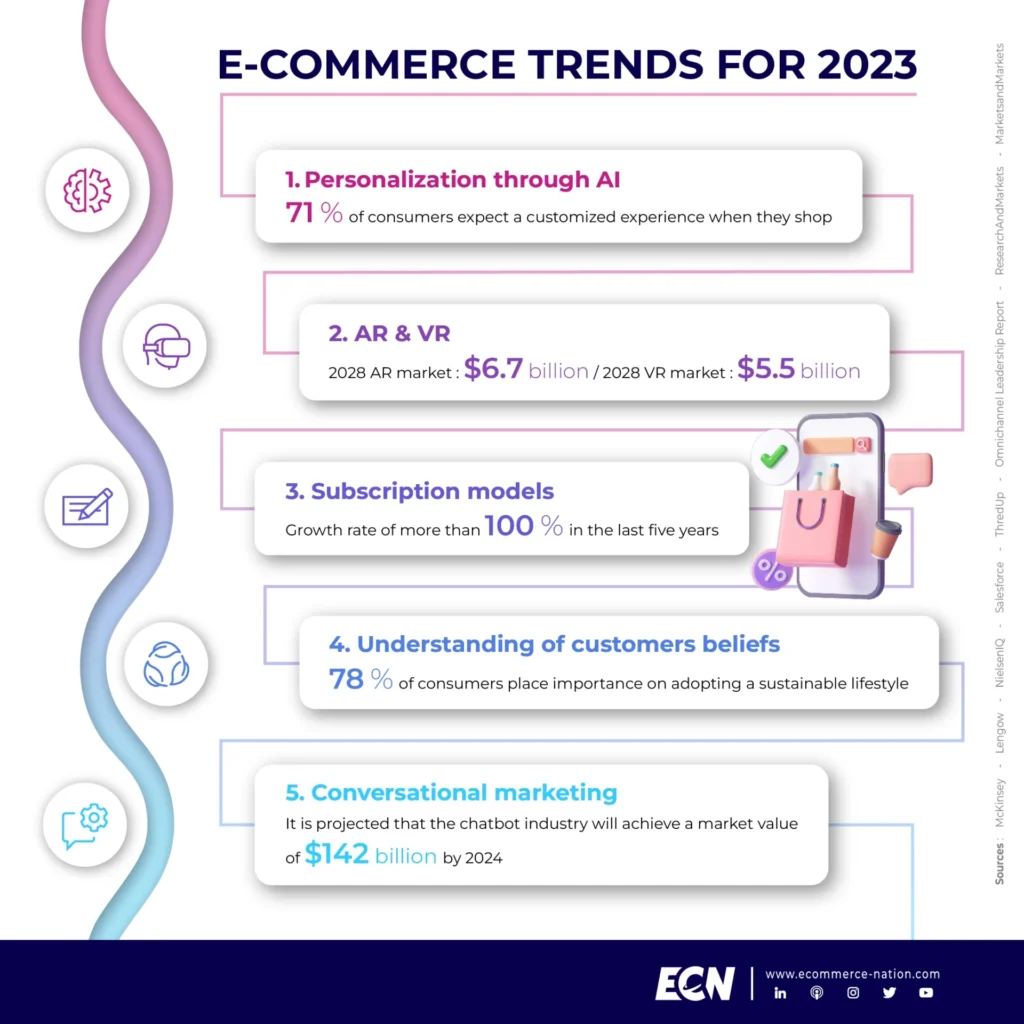
#6 Re-commerce
Re-commerce, the practice of reselling used goods, is becoming a mainstream trend. As consumers become more conscious of the environmental impact of fast fashion and fast consumption, they are turning towards buying and selling used goods.
A report by ThredUp reveals that the resale market is projected to reach $64 billion by 2024, a huge increase from its current size. The report also shows that the resale market is growing 21 times faster than the traditional retail market. With the rise of online marketplaces for secondhand goods, re-commerce has never been more accessible, convenient, and profitable.
#7 BOPIS
Buy online, pick up in-store (BOPIS) is a shopping model that allows customers to purchase products online and pick them up in-store, saving time and hassle. BOPIS has become increasingly popular in recent years, and its popularity skyrocketed during the COVID-19 pandemic when customers were hesitant to enter stores.
According to a report by Adobe, BOPIS orders increased by 259% year-over-year in May 2020. This trend is likely to continue as consumers seek out more convenient and contactless shopping options. Retailers that offer BOPIS can benefit from increased foot traffic and customer loyalty, making it a win-win for both customers and businesses.
#8 Sensory Shopping
Sensory shopping is an emerging trend in the retail industry that allows customers to experience products through all five senses, resulting in a more immersive and memorable shopping experience. This approach aims to stimulate emotions and create a stronger emotional connection between customers and brands.
According to a report by ResearchAndMarkets, the sensory marketing market is expected to reach $62.8 billion by 2025. This growth can be attributed to the increasing demand for unique and personalized shopping experiences that go beyond traditional retail environments.
Sensory shopping is set to play a key role in shaping the future of retail, providing brands with a competitive edge in the crowded e-commerce landscape.
#9 Unified commerce
Unified commerce is a retail strategy that seeks to provide a consistent and seamless shopping experience across all channels. It aims to break down the silos that exist between different sales channels, allowing customers to seamlessly move between them as they shop. This can include online, mobile, and in-store channels.
According to a report by MarketsandMarkets, the global unified commerce market is expected to reach $3.07 trillion by 2023, growing at a compound annual growth rate of 25.2%. This growth can be attributed to the increasing demand for a more integrated shopping experience and the adoption of new technologies that enable retailers to achieve this goal. By adopting a unified commerce approach, retailers can improve customer satisfaction and loyalty, as well as increase sales across all channels.
#10 OOH Delivery
Out-of-home (OOH) delivery is a growing trend in the world of e-commerce, as consumers seek more convenience in their shopping experiences. OOH delivery refers to the delivery of products to public locations such as parks or offices, making it easier for consumers to receive their purchases without having to be at home.
According to a report by McKinsey, 60% of consumers are willing to try OOH delivery. This trend is expected to continue to grow in popularity as more retailers and delivery services adopt this model, offering greater flexibility and convenience for consumers.
